

किशोरावस्था की समस्याएँ | Problems of Adolescence in Hindi
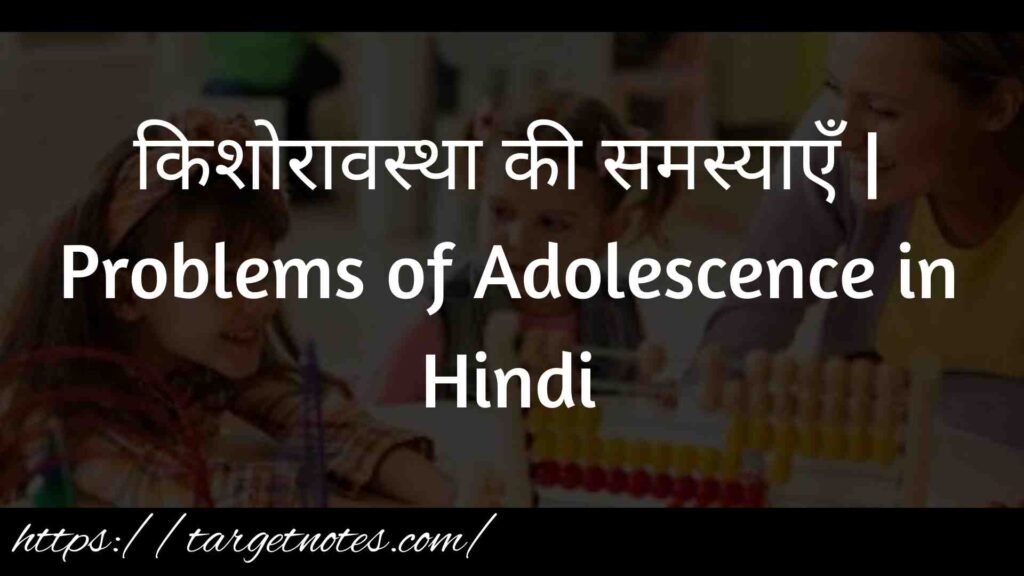
किशोरावस्था की समस्याएँ ( Problems of Adolescence)
किशारों की कुछ ऐसी समस्याएँ होती हैं जिनपर प्रकाश डालना आति आवश्यक है। किशोरों में वैसे तो शारीरिक विचलन एवं शारीरिक दोष, जैसे- दाँत, श्रवण, दृष्टि आदि से सम्बन्धित समस्याएँ होती हैं किन्तु इनसे हटकर भी कुछ ऐसी समस्याएँ होती हैं जिन पर विचार करना आवश्यक है क्योंकि इन समस्याओं से भली भाँति अवगत होने पर ही शिक्षक अभिभावक आदि किशोरों के उचित समायोजन में सहायता प्रदान कर सकते हैं। अतः किशोरों की कुछ समस्याओं का वर्णन इस प्रकार है-
1) पारिवारिक सम्बन्धों एवं सामाजिक समायोजन से सम्बन्धित समस्या (Problem Relating to Family Relationships and Social Adjustment) – प्राय: देखा जाता है कि किशोर तथा किशोरियाँ किसी भी सामाजिक कार्यक्रम में स्वतन्त्र होकर हिस्सा लेना चाहते हैं जिसकी अनुमाति प्रायः अभिभावकों से प्राप्त नहीं होती है। परिणामस्वरूप अभिभावकों एवं किशोरों के मध्य तनाव बढ़ता है एवं पारिवारिक संघर्ष अत्यन्त तीव्र हो जाता है। पारिवारिक संघर्ष रहने से किशोरों को अपने विकासात्मक कार्यों को पूरा करने में अपने अभिभावकों से सहयोग एवं उचित दिशा निर्देश नहीं मिल पाता है और उनकी समस्याएँ अत्यन्त भयावह हो जाती है। सिम्पसन ने अपने एक अध्ययन में पाया कि जिन किशोरों को पारिवारिक संघर्ष का सामना करना पड़ता है उनका समायोजन स्कूल अधिकारियों, साथियों तथा पास-पड़ोस के लोगों से भी तनावपूर्ण होता है। इस प्रकार उनकी समस्या और भी जटिल हो जाती है।
2) विद्यालय में समायोजन सम्बन्धी समस्याएँ (Problems Relating to Adjustment in School) – विद्यालय में अध्यापकों तथा अपने साथियों के साथ उचित समायोजन की समस्या का सामना किशोरों को करना पड़ता है। कुछ रूढ़िवादी प्रकृति के शिक्षक कक्षा में किशोरों के साथ अत्यन्त कठोरता (सख्ती) से पेश आते हैं तथा किशोरों को किसी भी प्रकार की स्वतन्त्रता प्रदान करने से इन्कार कर देते हैं तथा उन्हें दण्ड भी देते हैं। ऐसी अवस्था में किशोरों को समायोजन करने में बहुत परेशानी होती है। सामान्यतः स्कूल का पाठ्यक्रम मूलतः सैद्धान्तिक होता है। एवं लड़के तथा लड़कियों की उनमें मुश्किल से किसी तरह की सहभागिता हो पाती है। कक्षा में शान्त होकर पाठ्यक्रमों पर भाषण सुनना उन्हें नितान्त उबाऊ लगता है।
3) नैतिक व्यवहार से सम्बन्धित समस्या (Problem Relating to Moral Behaviour)- प्रायः किशोर अपने लिए एक अत्यन्त ही अवास्तविक उच्च मानक निर्धारित कर लेते हैं जिन्हें वे पूरा नहीं कर पाते। इससे उनमें दोषभाव उत्पन्न होता है एवं उनके समक्ष विभिन्न प्रकार की समस्याएँ उत्पन्न हो जाती हैं। इतना ही नहीं अध्ययनों द्वारा यह पता चला है कि किशोर दूसरों के लिए भी अवास्तविक उच्च मानक निर्धारित कर लेते हैं एवं जब दूसरे उन मानक को पूरा नहीं कर पाते हैं तो वे उनसे लड़ने-झगड़ने लगते हैं। इस प्रकार उनमें सामाजिक समायोजन से सम्बन्धित समस्याएँ उत्पन्न हो जाती हैं। कुछ किशोरों को नैतिक नियमों का पालन करना ही नहीं आता एवं कुछ किशोर क्या सही है क्या गलत यह सीख ही नहीं पाते हैं। इन किशोरों में नैतिक समस्याओं के साथ-साथ सामाजिक समायोजन की समस्या भी उत्पन्न हो जाती हैं।
4) मादक वस्तुओं के सेवन की समस्या (Problem of Drug Abuse ) – वर्तमान समय में किशोरों में मादक वस्तुओं के सेवन से सम्बन्धित समस्या काफी गम्भीर हो गई है। इन मादक वस्तुओं में गाँजा, अफीम, कोकीन आदि का सेवन करते हैं। मनोवैज्ञानिक अध्ययनों से यह सिद्ध हो गया है कि इन मादक वस्तुओं के सेवन का असात्मक प्रभाव होता है जिसके कारण उनमें सामाजिक आर्थिक, नैतिक तथा पारिवारिक समस्याएँ उत्पन्न कर उन्हें सदा के लिए व्यसनी बना देता है।
5) व्यावसायिक समायोजन से सम्बन्धित समस्या ( Problem Relating to Occupational Adjustment) – किशोरावस्था एक ऐसी अवस्था है जहाँ किशोर अपने भविष्य के विषय में कुछ परियोजना बनाने के लिए सक्षम हो जाते हैं। वह भविष्य में कौन-सा व्यवसाय चुनेगा, इस पर अक्सर वह विचार करता रहता है ।
ऐसे में यदि वह देखता है कि अनेक वयस्क अच्छी शिक्षा प्राप्त करने के पश्चात् भी किसी अच्छे व्यवसाय का चुनाव करने में असमर्थ रहे तो उसमें भी घोर निराशा व कुण्ठा होती है एवं वह विद्रोही हो जाता है तथा समाज तथा अपने परिवार के लिए एक समस्या बन जाता है।
6 ) आत्महत्या की समस्या (Problem of Suicide) – अनेक अध्ययन यह बताते हैं कि किशोरों में आत्महत्या की समस्या भी अत्यन्त प्रबल होती है। स्मिथ के अध्ययन के अनुसार किशोरों की मृत्यु का दूसरा प्रधान कारण आत्महत्या ही है। किशोरों में अवसाद, प्रिय वस्तु को खो देना, सामाजिक अलगाव, पारिवारिक संघर्ष जैसी समस्याएँ देखने को मिलती हैं। शिक्षा मनोवैज्ञानिकों ने किशोरावस्था की आत्महत्या को इतनी अधिक गम्भीरता से लिया है कि उन्होंने शिक्षकों को ऐसे किशोरों की पहचान करके उनके लिए अलग से कुछ मार्गदर्शन करने की विशेष व्यवस्था पर बल दिया है।
7) यौन व्यवहार से सम्बन्धित समस्या (Problem Relating to Sexual Behaviour) – इस अवस्था में यौन व्यवहार से सम्बन्धित समस्या भी अत्यन्त तीव्र एवं तीक्ष्ण होती है। शारीरिक परिपक्वता के कारण उनके यौन अंगों का विकास तो पूर्ण हो जाता है किन्तु उनमें मनोवैज्ञानिक परिपक्वता के अभाव में यौन व्यवहार से सम्बन्धित विभिन्न प्रकार की समस्याएँ उत्पन्न हो जाती हैं।
8) वित्तीय समस्याएँ (Financial Problems) – अपने साथी मित्रों के मध्य विशिष्टता बनाए रखने के लिए किशोर अधिक से अधिक पैसा खर्च करता है तथा अपने साथियों को प्रभावित करता है। अभिभावकों से वह इतना रुपया माँग नहीं सकता है अतः वह इसी विचार में डूबा रहता है कि पैसे की व्यवस्था वह कैसे करे। इसके लिए कभी-कभी वह गलत मार्ग का भी चुनाव कर लेता है।
9) सांवेगिक समस्या (Emotional Problem) – किसी भी परिस्थिति में बालक का व्यवहार कोमलता, भय, क्रोध, विरोध आदि से युक्त हो जाता है। कई बार बालक ऐसा सांवेगिक व्यवहार करता है जिसका कारण उसे भी ज्ञात नहीं होता। वह अपने संवेगों पर सन्तुलन नहीं बना पाता जो कि बहुत आवश्यक होता है। संवेग को बालक की उद्वेलित अवस्था कहा जाता है।
इस प्रकार स्पष्ट है कि किशोरों में विभिन्न प्रकार की समस्याएँ होती हैं जिन पर शिक्षकों द्वारा विशेष ध्यान देने की आवश्यकता है। जब तक किशोर ऐसी समस्याओं से घिरा रहेगा, उनकी शैक्षिक उपलब्धि के ऊँचा होने का कोई सवाल ही नहीं उठता है।
Important Link…
- अधिकार से आप क्या समझते हैं? अधिकार के सिद्धान्त (स्रोत)
- अधिकार की सीमाएँ | Limitations of Authority in Hindi
- भारार्पण के तत्व अथवा प्रक्रिया | Elements or Process of Delegation in Hindi
- संगठन संरचना से आप क्या समझते है ? संगठन संरचना के तत्व एंव इसके सिद्धान्त
- संगठन प्रक्रिया के आवश्यक कदम | Essential steps of an organization process in Hindi
- रेखा और कर्मचारी तथा क्रियात्मक संगठन में अन्तर | Difference between Line & Staff and Working Organization in Hindi
- संगठन संरचना को प्रभावित करने वाले संयोगिक घटक | contingency factors affecting organization structure in Hindi
- रेखा व कर्मचारी संगठन से आपका क्या आशय है ? इसके गुण-दोष
- क्रियात्मक संगठन से आप क्या समझते हैं ? What do you mean by Functional Organization?
You may also like
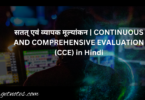
सतत् एवं व्यापक मूल्यांकन | CONTINUOUS AND...
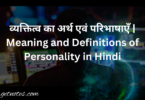
व्यक्तित्व का अर्थ एवं परिभाषाएँ | Meaning and...

मानक सन्दर्भित तथा मानदण्ड सम्बन्धी मूल्यांकन में...
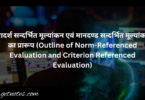
आदर्श सन्दर्भित मूल्यांकन एवं मानदण्ड सन्दर्भित...
![case study of an adolescent problems and needs in hindi संचयी ग्रेड बिन्दु औसत [CUMULATIVE GRADE POINT AVERAGE (CGPA)] : उपयोग, लाभ एंव हानि](https://targetnotes.com/wp-content/uploads/2024/03/हिन्दी-गद्य-के-यात्रा-साहित्य-7-145x100.png)
संचयी ग्रेड बिन्दु औसत [CUMULATIVE GRADE POINT AVERAGE...
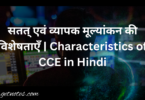
सतत् एवं व्यापक मूल्यांकन की विशेषताएँ |...
About the author.
Anjali Yadav
इस वेब साईट में हम College Subjective Notes सामग्री को रोचक रूप में प्रकट करने की कोशिश कर रहे हैं | हमारा लक्ष्य उन छात्रों को प्रतियोगी परीक्षाओं की सभी किताबें उपलब्ध कराना है जो पैसे ना होने की वजह से इन पुस्तकों को खरीद नहीं पाते हैं और इस वजह से वे परीक्षा में असफल हो जाते हैं और अपने सपनों को पूरे नही कर पाते है, हम चाहते है कि वे सभी छात्र हमारे माध्यम से अपने सपनों को पूरा कर सकें। धन्यवाद..
Leave a Comment X
Save my name, email, and website in this browser for the next time I comment.
- English मराठी বাংলা
बच्चों और टीनेजर्स में नजर आने वाली मानसिक समस्याएं और उनके इलाज

बचपन और टीनएज उम्र का वो पड़ाव होते हैं, जहां बच्चे का विकास बहुत तेजी से होता है। इस दौरान बच्चे शारीरिक और मानसिक रूप से बहुत तेजी से बदलते हैं। इनमें से कुछ बदलाव प्राकृतिक रूप से हर किसी के साथ होते हैं, वहीं कुछ ऐसे भी बदलाव होते हैं जो आसपास के माहौल, वातावरण आदि की वजह से बच्चों में नजर आने लगते हैं।
आज के दौर में कम उम्र के बच्चों में भी स्कूल, पढ़ाई और बिगड़ते माहौल की वजह से स्ट्रेस देखा जाने लगा है। आजकल बहुत कम उम्र के बच्चों में भी आसपास के माहौल, परिवार की उदासीनता, लड़ाई झगड़े और हिंसा के चलते मानसिक रोग नजर आने लगे हैं।
यह बेहद चिंताजनक स्थिति है क्योंकि जिस उम्र में बच्चों को हंसी खुशी के माहौल में रहते हुए खेलना कूदना और नया कुछ सीखते रहना चाहिए, उस उम्र में बच्चे मानसिक समस्याओं से ग्रस्त हो जाते हैं। अगर सही समय पर इन समस्याओं को देखा समझा और उनका इलाज नहीं किया गया तो यह बच्चे उम्र भर के लिए इस समस्या से ग्रस्त रहते हैं और इसका समाधान ना मिल पाने के चलते अन्य असामाजिक गतिविधियों में लिप्त हो जाते हैं। चलिए आप को बच्चों में पनप रही मानसिक समस्याओं के बारे में और डिटेल में बताते हैं।
बच्चे की मानसिक बीमारी को समझें और इस तरह उसके भविष्य को बेहतर बनाएं
Table of Contents
बच्चों के मानसिक स्वास्थ्य को प्रभावित करने वाले कारक
एक स्टडी के अनुसार यह पता चला है कि भारत में 5 करोड़ से अधिक बच्चे मानसिक समस्याओं से जूझ रहे हैं। यह नंबर नियमित रूप से बढ़ता जा रहा है क्योंकि अभी तक बच्चों के मानसिक स्वास्थ्य को लेकर कोई बड़े कदम नहीं उठाए गए हैं। बच्चों के मानसिक स्वास्थ्य को प्रभावित करने वाले बहुत से कारक होते हैं। दरअसल एडल्ट्स में जो मानसिक समस्याएं देखी जाती हैं वह बचपन से ही चली आ रही किसी न किसी मानसिक समस्या का बढ़ा हुआ रूप कहा जा सकता है।
बच्चों और टीनएजर्स को प्रभावित करने वाले कारक उनका परिवार, परिवार में माता-पिता के आपसी संबंध, उनके दोस्त, दोस्तों द्वारा उन पर किसी बात के लिए नियमित रूप से प्रेशर डालना, पढ़ाई लिखाई में सफल होने का प्रेशर,टेक्नोलॉजी का जीवन में बहुत अधिक हस्तक्षेप और सेक्सुअल हिंसा हो सकते हैं।
कुछ बच्चे अन्य बच्चों की तुलना में मानसिक रूप से अधिक परेशान और अकेला महसूस करते हैं। इसकी वजह यह हो सकती है कि वह खुद को किसी न किसी तरह से अन्य लोगों से अलग महसूस करते हैं या महसूस करवाए जाते हैं। अन्य लोगों की तुलना में बच्चे खुद को अलग अक्सर तब महसूस करते हैं जब वह समाज के बनाए ढर्रे के अनुसार खुद को नहीं पाते। इसमें उनकी सेक्सुअलिटी, क्लास, जाति के आधार पर भेदभाव, परिवार में हिंसा, किसी बड़े का सपोर्ट ना होना और हर वक्त बड़ों द्वारा प्रेशर थोपा जाना बड़े कारक साबित होते हैं।
किन मानसिक समस्याओं से जूझते हैं बच्चे
वैसे तो हर बच्चा एक दूसरे से अलग होता है और वह दुनिया में अभी तक जानी और समझी गई किसी भी मानसिक समस्या से जूझ रहा हो सकता है। भारत में नेशनल मेंटल हेल्थ सर्वे की 2016 में आई रिपोर्ट के अनुसार 13 से लेकर 17 साल तक की उम्र के 7.3% बच्चे किसी न किसी मानसिक समस्या से गुजर रहे हैं। इस रिपोर्ट में यह बात भी सामने आई है कि शहरी बच्चों में गांव के बच्चों की तुलना में मानसिक रोगों की समस्या अधिक देखी गई है। बच्चों में आमतौर पर ये मानसिक समस्याएं देखी जाती है।
ईटिंग डिसऑर्डर
बहुत से मामलों में यह देखा गया है कि बच्चे स्ट्रेस में होने पर या तो बहुत अधिक आने लगते हैं या खानपान बिल्कुल छोड़ देते हैं। इस तरह के ईटिंग डिसऑर्डर लड़कियों में लड़कों की तुलना में अधिक पाए जाते हैं। ऐसा बॉडी इमेज ईशु की वजह से भी होता है, जहां लड़कियों पर कम उम्र से ही एक खास तरह का दिखने का प्रेशर होता है। ईटिंग डिसऑर्डर कई तरह के होते हैं। टीनएज से ही बच्चों में बहुत अधिक खाने या खाना बिल्कुल छोड़ देने की कंडीशन देखी जाती हैं। इनमें बुलिमिया नर्वोसा और एनोरेक्सिया नर्वोसा बेहद कॉमन मानसिक और शारीरिक समस्याएं कही जा सकते हैं।
कई-कई घंटों तक भूख ना लगना, क्या ये चिंता की बात हो सकती है?
पर्सनालिटी डिसऑर्डर
बहुत से बच्चों में युवावस्था से पहले यानी टीनएज से ही पर्सनालिटी से जुड़े कुछ लक्षण नजर आने लगते हैं। उनका बहुत अधिक गुस्सा करना, लड़ाई झगड़ा करना, खीज जाना, मारपीट आदि करना पर्सनालिटी डिसऑर्डर के ही लक्षण कहे जाते हैं।
मूड डिसऑर्डर
ये बेहद कॉमन मानसिक समस्याएं हैं जहां कम उम्र से ही स्ट्रेस के चलते बच्चों का मूड और व्यवहार बदल जाता है। कभी वह बहुत उदास हो सकते हैं तो कभी वह बहुत हाइपरएक्टिव नजर आते हैं। डिप्रेशन, उदासी, नाराजगी और बाइपोलर डिसऑर्डर मूड डिसऑर्डर है जो बच्चों में बेहद आम तौर पर देखे जाते हैं।
एंजायटी डिसऑर्डर
बहुत से बच्चों को सोशल एंजायटी होती है तो वहीं बहुतों को तरह-तरह के डर घेरने लगते हैं। टीनएज में अभी ये डर बहुत खुलकर सामने नहीं आते, लेकिन पढ़ाई, करियर या किसी खास मामले में यह डर खुलकर बच्चे को अपनी चपेट में ले लेते हैं।
एडिक्शन या नशा भी एक मानसिक समस्या है जिसके चलते एक बच्चा कम उम्र में ही शराब, सिगरेट या ड्रग का आदी हो जाता है। इस उम्र में उनके सोचने समझने की शक्ति पूरी तरह से विकसित नहीं �होती और यही वजह है कि अल्कोहल और ड्रग उन्हें पूरी तरह से अपने बस में कर लेते हैं।
मानसिक समस्या से जूझ रहे बच्चे में नजर आने वाले लक्षण
यह जानना और समझना बेहद जरूरी है कहीं आपका बच्चा किसी मानसिक समस्या से जूझ तो नहीं रहा है।।यह पता लगाना इतना मुश्किल नहीं है। अगर आप अपने बच्चों की लक्षणों और हरकतों पर पैनी नजर रखें तो आप समझ सकते हैं कि आपका बच्चा किसी मुश्किल में है और उसे मदद की जरूरत है।
यह लक्षण समझ में आने पर आप अपने बच्चे को किसी मेंटल हेल्थ प्रोफेशनल के पास ले जा सकते हैं, जहां टॉक थेरेपी या किसी अन्य प्रकार की मेंटल हेल्थ थेरेपी से बच्चे को अपनी समस्या से निजात मिल सकती है। चलिये आपको बताते हैं आपको अपने बच्चे की किन लक्षणों पर पैनी नजर रखने की जरूरत है।।अगर आपके बच्चे में यह लक्षण नजर आ रहे हैं तो आपको तुरंत किसी एक्सपर्ट से संपर्क करना चाहिए।
बहुत अधिक थकान हर समय महसूस होना
बहुत अधिक सोना या बिल्कुल ना सोना
भूख ना लगना
हर वक्त निराशा महसूस करना
एकाग्रता की कमी
गिल्ट की भावना बढ़ने लगना
सुसाइडल महसूस करना
उदास खाली या घबराहट महसूस करना
बचाव और इलाज
बच्चों के मानसिक स्वास्थ्य को बेहतर बनाने में उनका परिवार बहुत बड़ी भूमिका निभाता है। ऐसे में अगर आपको यह समझ में आ रहा है कि आपका बच्चा किसी वजह से मानसिक रूप से परेशान महसूस कर रहा है तो उसका सही इलाज करवाया जाना बेहद जरूरी है।
टीनएज वैसे ही अपने आप में एक बेहद मुश्किल दौर होता है, ऊपर से मानसिक समस्याएं इसे और भी चैलेंजिंग बना सकती है। इसीलिए परिवार को अपने बच्चे के प्रति बहुत उदार होना चाहिए और उसे खूब प्यार देना चाहिए।
जब बच्चा महसूस करता है कि परिवार से प्यार और अपनापन मिल रहा है तो उसे अपनी समस्याओं का सामना करने की हिम्मत मिलती है।
अगर आप महसूस कर रहे हैं कि आपका बच्चा पढ़ाई के प्रेशर के तले दबता जा रहा है और इसकी वजह से लगातार घबराहट डर और निराशा महसूस कर रहा है तो उस पर बेवजह टॉप करने का दबाव न डालें। हर बच्चे की क्षमताएं और काबिलियत अलग-अलग होती है। जरूरी नहीं है कि अगर आपका बच्चा मैथस में 100 में से 100 नहीं ला सकता तो वह जीवन में कुछ नहीं कर पाएगा। आज के दौर में कैरियर की कोई कमी नहीं है। जिस क्षेत्र में बच्चा चाहे उस क्षेत्र में अपना नाम बना सकता है और पैसे भी कमा सकता है। इसीलिए उस पर डॉक्टर इंजीनियर या एमबीए का दबाव ना डालें।
घर सभी के लिए एक सेफ और सुरक्षित जगह होनी चाहिए। क्या आपका बच्चा घर में असुरक्षित महसूस कर रहा है? अगर ऐसा है तो उसके कारकों का पता लगाएं। क्या कोई व्यक्ति या घटना है जिसकी वजह से आपके बच्चे को घर में असुरक्षा की भावना महसूस हो रही है? अगर ऐसा है तो उस व्यक्ति या घटना से तुरंत निजात पाएं और अपने बच्चे के लिए एक बेहतर और सेफ घर बनाए।
आपका बच्चा मानसिक रूप से परेशान है और वह पर्सनालिटी और मूड से जुड़े लक्षण दिखा रहा है तो उसे किसी चाइल्ड साइकोलॉजिस्ट, थैरेपिस्ट या मेंटल हेल्थ प्रोफेशनल के पास ले जाएं। वह एक्सपोर्ट्स होते हैं जो डॉक्टर की तरह ही आपके बच्चे की समस्या को समझ कर उसकी मुश्किलें आसान करने में मदद कर सकते हैं। अपने बच्चे को खूब लाड प्यार दें और उसे है यकीन दिलाएं कि वह जल्द से जल्द दुरुस्त हो जाएगा। उस पर किसी भी तरह का अनरियलिस्टिक प्रेशर ना डालें। नियमित रूप से उससे बात करते रहें ताकि अगर उसके मन में कोई भी उलझन है तो वह खुलकर आपको बता सके।
हम उम्मीद करते हैं कि यह जानकारी आपके काम आएगी। ऐसी ही स्टोरीज के लिए पढ़ते रहिये idiva हिंदी।
1 मिनट में पढ़ें
रीडर्स इन्हें भी पढ़ रहे हैं, पुरानी सिल्क और बनारसी साड़ियों से बनवाए जा सकते हैं करिश्मा कपूर के 7 स्टाइलिश आउटफिट्स..., मैचिंग हुआ पुराना साड़ी के साथ पहनें कॉन्ट्रास्ट कलर ब्लाउज़, जानें किस रंग के साथ क्या..., आप ये भी पसंद करेंगे, 5 बातें जो किसी इंसान को बनने नहीं देती कभी इमोशनली स्ट्रॉन्ग, जानें इससे निपटने के..., शक करने समेत रिलेशनशिप की वो 5 बातें जो किसी भी व्यक्ति को कर सकती हैं मानसिक रूप से..., नींद की कमी की वजह से खराब रह रहा है युवाओं का मूड, एक्सपर्ट से जानें रात में नींद न..., कभी-कभी कुछ ना करना हो सकता है लाइफ को ट्रैक पर लाने का बेस्ट तरीका, जानें इसके 5 फायदे.

किशोरावस्था (Adolescence in Hindi)
किशोरावस्था Adolescence की अवधि 13 से 18 वर्ष के मध्य हिती हैं। किशोरावस्था को अंग्रेजी भाषा में Adolescence कहते है। जिसकी उत्पत्ति लैटिन भाषा के Adolescere से हुई हैं। जिसका अर्थ हैं-प्रजनन क्षमता एवं परिपक्वता का विकास।
यह वह अवस्था होती हैं, जिसमें बालक पूर्ण रूप से परिपक्व हो जाता हैं और वह सभी प्रकार के मूर्त व अमूर्त चिंतन करने लगते हैं। यह वह अवस्था होती है जिसमे बालकों में प्रेम की भावना का विकास तीव्र गति से होता हैं।
यह बाल्यवस्था के बाद कि अवस्था हैं। इस अवस्था मे आने के पश्चात बालक अकेले रहना बिल्कुल पसंद नही करते अकसर उन्हें अपनी मित्र मंडली के साथ रहना एवं समय व्यतीत करना पसंद होता हैं। आज हम बालकों के किशोरावस्था के संबंध में विस्तार से जनिंगे। हमारा यह लेख B.Ed,M.Ed,C.TET,U.TET जैसी परीक्षाओं में सफल होने हेतु अत्यंत आवश्यक हैं कृपया इसे समाप्ति तक पढ़े व समझें।
किशोरावस्था की परिभाषा (Definition of Adolescence)

रॉस महोदय के अनुसार – “किशोर समाज सेवा के आदर्शों का निर्माण व पोषण करते हैं।”
वेलेंटाइन महोदय के अनुसार – “किशोरावस्था अपराध प्रवर्ति के विकास का नाजुक समय हैं।”
क्रो एंड क्रो महोदय के अनुसार – “किशोर ही वर्तमान की शक्ति एवं भावी आशा को प्रस्तुत करता हैं।”
जरशील्ड महोदय के अनुसार -“किशोरावस्था वो समय हैं जिसमें विचारशील व्यक्ति बाल्यवस्था से परिपक्वता की ओर संक्रमण करता हैं।”
जॉन्स महोदय के अनुसार – “किशोरावस्था, शैशवावस्था की पुनरावृत्ति का काल हैं।”
विभिन्न परिभाषाओं को ध्यान में रखते हुए –
इस अवस्था में छात्रों का विकास तीव्र गति से होता हैं। यह वह अवस्था होती हैं, जिसमें छात्र परिपक्वता की ओर अग्रसर होता हैं। इस अवस्था मे लड़को की अपेक्षा लड़कियों का विकास तीव्र गति से होता हैं।
इस अवस्था में छात्रों का शारिरिक मानसिक सामाजिक बौद्धिक सभी का विकास अपनी चरम सीमा में होता हैं। यह अवस्था छात्रों के बिगड़ने एवं सुधरने की अवस्था होती हैं।
(स्टेनली हॉल ने इसे नए जन्म काल की अवस्था माना हैं और वह कहते हैं कि यह दबाव,संघर्ष,तनाव का काल होता हैं।)
किशोरावस्था की विशेषता (Characteristics of Adolescence)
1. यह सर्वाधिक काम प्रवर्ती एवं आकर्षण की अवस्था होती हैं।
2. इस अवस्था में छात्रों का सर्वांगीण विकास (शारिरिक, मानसिक,बौद्धिक,सामाजिक,सांस्कृतिक) होता हैं।
3. यह अवस्था तार्किक एवं अमूर्त चिंतन की अवस्था होती हैं।
4. इस अवस्था में छात्रों के अंदर समाज सेवा की प्रवर्ति अधिक दिखाई देती हैं। इस समय वह सामाजिक कार्यो में अधिक रुचि लेने लगते हैं।
5. यह छात्रों के परिवर्तन का काल होता हैं। इस अवस्था में छात्रों की मानसिक स्थिति में तनाव,संघर्ष एवं दबाव के भाव विद्यमान रहते हैं। – स्टेनली हॉल के अनुसार।
6. यह छात्रों के जीवन का सबसे कठिन काल होता हैं। इस अवस्था में विकास की गति लड़को की अपेक्षा लड़कियों में अधिक होती हैं।
7. इस अवस्था में छात्रों का संवेगात्मक विकास तीव्र गति से होता हैं।
इस अवस्था मे बालक अपने किसी प्रिय व्यक्ति का अनुसरण करता हैं एवं उसकी अच्छाई-बुराई को अपने भीतर समाहित करने लगता हैं। इस अवस्था में प्रायः छात्रों में विशिष्ट दिखने की प्रवर्ति का विकास होता हैं। जिस कारण वह अपने पहनावे,खान-पान,व्यवहार में परिवर्तन लाने का प्रयास करते हैं।
किशोरावस्था में विकास के सिद्धांत (Principles of Development in Adolescence)
● क्रमिक विकास का सिद्धांत – इस सिद्धांत के अनुसार बालको का विकास एक क्रम के अनुसार होता हैं अर्थात गर्भावस्था,शैशवावस्था,बाल्यवस्था और किशोरावस्था। इन विभिन्न चरणों में छात्रों का विकास धीरे-धीरे करके होता हैं।
● त्वरित विकास का सिद्धांत – इस सिद्धांत के अनुसार शैशवावस्था एवं बाल्यवस्था से अधिक किशोरावस्था में विकास की गति तीव्र होती हैं।
निष्कर्ष –
यह वह अवस्था होती हैं, जिसमें बालकों में अपने परिवर्तन होते हैं। जो उन्हें उनके भावी भविष्य की ओर अग्रसर करने में उनकी सहायता करता हैं। इस अवस्था मे छात्रों का उचित मार्गदर्शन अति आवश्यक है, क्योंकि यही वह उम्र होती हैं जो छात्रों के भविष्य को निर्धारित करती हैं।
तो दोस्तों, आज आपने जाना कि किशोरावस्था क्या हैं? (Adolescence in Hindi) हम आशा करते हैं कि आपको हमारी यह पोस्ट पसंद आई हो। धन्यवाद!
Related Posts

सृजनात्मक – Creativity Meaning in Hindi

ब्लूम का वर्गीकरण |Bloom Taxonomy in Hindi
Leave a comment cancel reply.
Your email address will not be published. Required fields are marked *
Save my name, email, and website in this browser for the next time I comment.
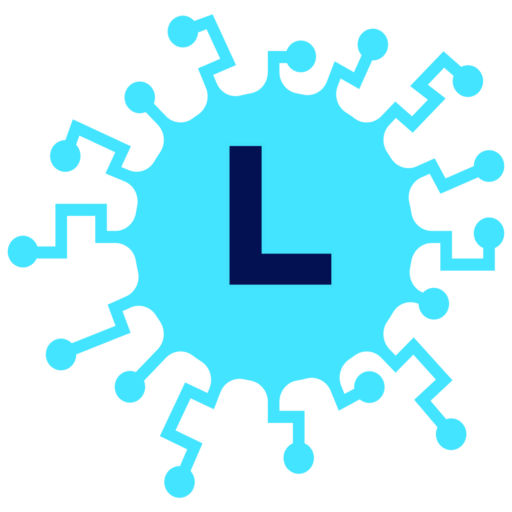
Case Study in Hindi Explained – केस स्टडी क्या है और कैसे करें
आपने अक्सर अपने स्कूल या कॉलेज में केस स्टडी के बारे में सुना होगा । खासकर कि Business Studies और Law की पढ़ाई पढ़ रहे छात्रों को कैसे स्टडी करने के लिए कहा जाता है । पर case study kya hai ? इसे कैसे करते हैं , इसके फायदे क्या हैं ? इस आर्टिकल में आप इन सभी प्रश्नों के बारे में विस्तार से जानेंगे ।
Case study in Hindi explained के इस पोस्ट में आप न सिर्फ केस स्टडी के बारे में विस्तार से जानेंगे बल्कि इसके उदाहरणों और प्रकार को भी आप विस्तार से समझेंगे । यह जरूरी है कि आप इसके बारे में सही और विस्तृत जानकारी प्राप्त करें ताकि आपको कभी कोई समस्या न हो । तो चलिए विस्तार से इसके बारे में जानते हैं :
Case Study in Hindi
Case Study एक व्यक्ति , समूह या घटना का गहन अध्ययन है । एक केस स्टडी में , किसी भी घटना या व्यक्ति का सूक्ष्म अध्ययन करके उसके व्यवहार के बारे में पता लगाया जाता है । एजुकेशन , बिजनेस , कानून , मेडिकल इत्यादि क्षेत्रों में केस स्टडी की जाती है ।
case study सिर्फ और सिर्फ एक व्यक्ति , घटना या समूह को केंद्र में रखकर किया जाता है और यह उचित भी है । इसकी मदद से आप सभी के लिए एक ही निष्कर्ष नहीं निकाल सकते । उदहारण के तौर पर , एक बिजनेस जो लगातार घाटा झेल रहा है उसकी केस स्टडी की जा सकती है । इसमें सभी तथ्यों को मिलाकर , परखकर यह जानने की कोशिश होती है कि क्यों बिजनेस लगातार loss में जा रही है ।
परंतु , जरूरी नहीं कि जिस वजह से यह पार्टिकुलर कम्पनी घाटा झेल रही हो , अन्य कंपनियों के घाटे में जाने की यही वजह हो । इसलिए कहा जाता है कि किसी एक मामले के अध्ययन से निकले निष्कर्ष को किसी अन्य मामले पर थोपा नहीं जा सकता । इस तरह आप case study meaning in Hindi समझ गए होंगे ।
Case Study examples in Hindi
अब जबकि आपने case study kya hai के बारे में जान लिया है तो चलिए इसके कुछ उदाहरणों को भी देख लेते हैं । इससे आपको केस स्टडी के बारे में जानने में अधिक मदद मिलेगी ।
ऊपर के उदाहरण को देख कर आप समझ सकते हैं कि case study क्या होती है । अब आप ऊपर दिए case पर अच्छे से study करेंगे तो यह केस स्टडी कहलाएगी यानि किसी मामले का अध्ययन । पर केस स्टडी कैसे करें ? अगर हमारे पास ऊपर दिए उदाहरण का केस स्टडी करने को दिया जाए तो यह कैसे करना होगा ? चलिए जानते हैं :
Case Study कैसे करें ?
अब यह जानना जरूरी है कि एक case study आखिर करते कैसे हैं और किन tools का उपयोग किया जाता है । तो एक केस स्टडी करने के लिए आपको ये steps फॉलो करना चाहिए :
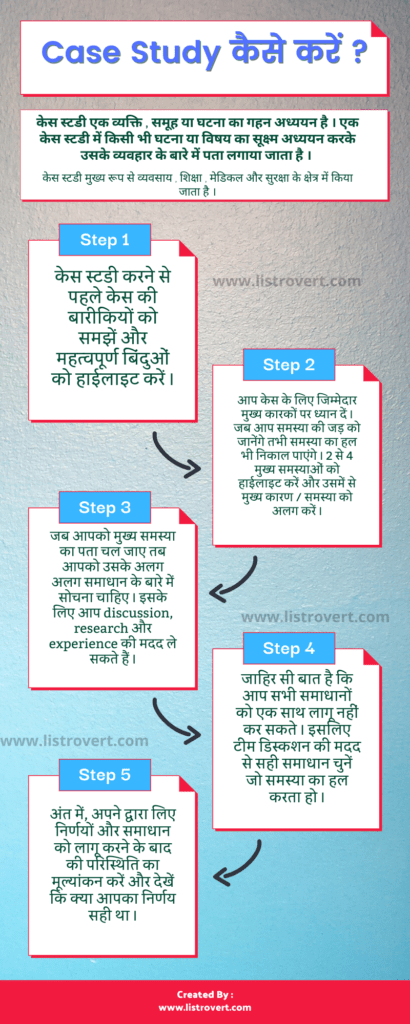
1. सबसे पहले केस को अच्छे से समझें
अगर आप किसी भी केस पर स्टडी करना चाहते हैं तो आपको सबसे पहले उसकी बारीकियों और हर एक डिटेल पर ध्यान देना चाहिए । तभी आप आगे बढ़ पाएंगे और सही निर्णय भी ले पाएंगे । Case को अच्छे से समझने का सबसे बड़ा फायदा यह है कि इसपर स्टडी करते समय आपको ज्यादा मेहनत नहीं करनी पड़ती । केस को अच्छे से समझने के लिए आप यह कर सकते हैं :
- Important points को हाईलाइट करें
- जरूरी समस्याओं को अंडरलाइन करें
- जरूरी और बारीकियों का नोट्स तैयार करें

2. अपने विश्लेषण पर ध्यान दें
Case Study करने के लिए जरूरी है कि आप अपने analysis पर ध्यान दें ताकि बढ़िया रिजल्ट मिल सके । इसके लिए आप विषय के 2 से 5 मुख्य बिंदुओं / समस्याओं को उठाएं और बारीकी से उनके बारे में जानकारी इकट्ठा करें । इसके बारे में पता करें कि ये क्यों exist करती है और संस्था पर इनका क्या प्रभाव है ।
आप उन समस्याओं के लिए जिम्मेदार कारकों पर भी नजर डालें और सभी चीजों को ढंग से समझने की कोशिश करें तभी जाकर आप सही मायने में case study कर पाएंगे ।
3. संभव समाधानों के बारे में सोचें
किसी भी केस स्टडी का तीसरा महत्वपूर्ण पड़ाव है कि आप समस्या के संभावित समाधानों के बारे में सोचें ।इसके लिए आप discussions , research और अपने अनुभव की मदद ले सकते हैं । ध्यान रहें कि सभी समाधान संभव हों ताकि उन्हें लागू किया जा सके ।
4. बेहतरीन समाधान का चुनाव करें
केस स्टडी का अंतिम पड़ाव मौजूदा समाधानों में से एक सबसे बेहतरीन समाधान का चुनाव करना है । आप सभी समाधानों को एक साथ तो बिल्कुल भी implement नहीं कर सकते इसलिए जरूरी है कि बेहतरीन को चुनें ।
Case Study format
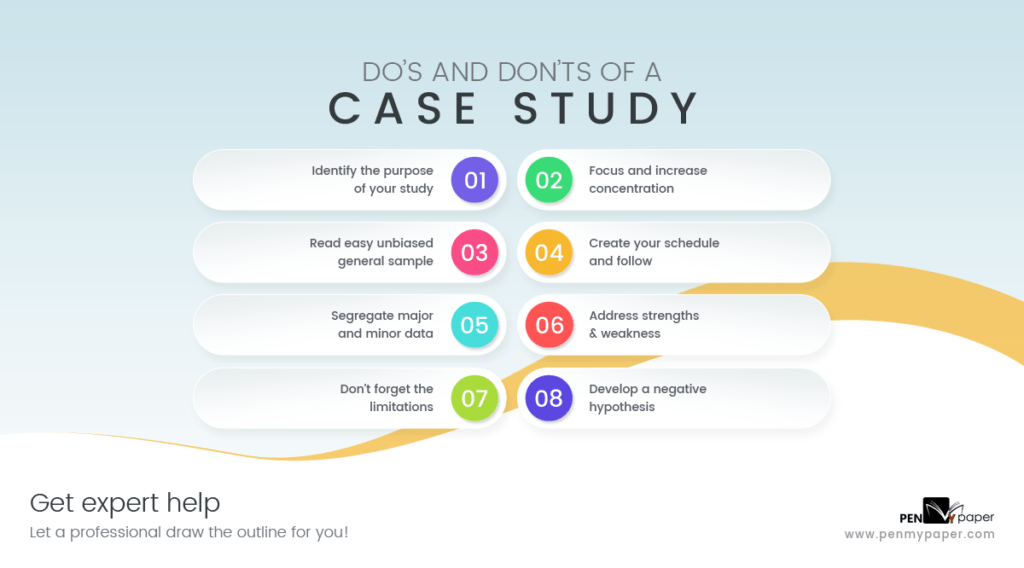
अगर आप YouTube video की मदद से देखकर सीखना चाहते हैं कि Case Study कैसे बनाएं तो नीचे दिए गए Ujjwal Patni की वीडियो देख सकते हैं ।
इस पोस्ट में आपने विस्तार से case study meaning in Hindi के बारे में जाना । अगर कोई प्वाइंट छूट गया हो तो कॉमेंट में जरूर बताएं और साथ ही पोस्ट से जुड़ी राय या सुझाव भी आप कॉमेंट में दे सकते हैं । पोस्ट पसंद आया हो और हेल्पफुल साबित हुई हो तो शेयर जरूर करें ।
- लड़कियों / महिलाओं केआई घर बैठे job ideas
- Petrochemical के बारे में पूरी जानकारी
- Print और electronic media के विभिन्न साधन
- Blog meaning in Hindi क्या है
I have always had a passion for writing and hence I ventured into blogging. In addition to writing, I enjoy reading and watching movies. I am inactive on social media so if you like the content then share it as much as possible .
Related Posts
Escrow account meaning in hindi – एस्क्रो अकाउंट क्या है, personality development course free in hindi – पर्सनैलिटी डेवलपमेंट, iso certificate क्या होता है आईएसओ सर्टिफिकेट के फायदे और उपयोग.
nice info sir thanks
Thanks. It is really very helpful.
I’m glad to know that you found this post about case study helpful! Keep visiting.
Leave A Reply Cancel Reply
Save my name, email, and website in this browser for the next time I comment.
Type above and press Enter to search. Press Esc to cancel.
Adolescent Girls and Health in India
- First Online: 01 January 2014
Cite this chapter

- Vijayan K. Pillai 3 &
- Rashmi Gupta 4
3162 Accesses
Adolescence is a vulnerable period in one’s life. It is essential to understand the factors that influence adolescent social, psychological, and psychosocial development for planning effective social service delivery systems to help adolescents survive the many risks that threaten their well-being. Of the 1.2 billion adolescents aged 10–19 years worldwide, 243 million, roughly 20 % live in India. Yet, in India, there is very little research on adolescent social, psychological, and psychosocial development. Research on Indian adolescents remains limited to fertility. Despite the Child Marriage Restraint Act of 1978, which sets the legal age at marriage for women at 18, almost one in three adolescents aged 15–19 was married in 1998–1999. Available data on adolescent reproductive health presented in this chapter suggest that Indian adolescent girls lack adequate control over making reproductive decisions. When poverty is combined with discrimination, outcomes can be harsh on the lives of adolescent girls in particular. One of the horrific outcomes of this disadvantage is the trafficking in adolescent girls. Girls living in slums are particularly vulnerable to trafficking. In the metropolitan area of Calcutta alone, more than one million children and adolescents live in slums. Nearly 60 % of sex workers in Delhi brothels were found to be adolescent girls. The proportion of trafficked adolescent girls is highest in West Bengal. Moreover, almost all parents of the trafficked girls were illiterate and about 90 % of these girls were sexually abused during childhood. Almost all the factors, such as the number of children, likelihood of contraceptive use, and prenatal visit, vary widely across states. Policies and programs for promoting adolescent health in India will demand more research on adolescents while taking into consideration the existing state-wide variations in several aspects of adolescent well-being will be examined in this chapter.
- India: adolescent anemia
- Adolescent well-being
- Birth injuries
- Chronic poverty
- Contraception usage
- Malnutrition
- Maternal and perinatal mortality
- Sex workers
- Transition to adulthood
This is a preview of subscription content, log in via an institution to check access.
Access this chapter
- Available as PDF
- Read on any device
- Instant download
- Own it forever
- Available as EPUB and PDF
- Compact, lightweight edition
- Dispatched in 3 to 5 business days
- Free shipping worldwide - see info
- Durable hardcover edition
Tax calculation will be finalised at checkout
Purchases are for personal use only
Institutional subscriptions
Banerjee, K. (1998). Marriage change in rural India, 1921–1981. The History of the Family, 3 (4), 64–94.
Google Scholar
Beals, A. R., & Eason, M. A. (1993). Siblings in North America and South Asia. In C. Nuckolls (Ed.), Siblings in South Asia: Brothers and sisters in cultural context (pp. 71–102). New York: Guilford Press.
Bhatia, B. D., & Chandra, R. (1993). Adolescent mother—An unprepared child. Indian Journal of Maternal and Child Health, 4 (3), 67–70.
CAS PubMed Google Scholar
Caldwell, J. C., Reddy, P. H., & Caldwell, P. (1983). The causes of marriage change in South India. Population Studies, 37 , 343–361.
Chakravarthy, B. N. (1989). Adolescent gynecological problems. In K. Bhaskarrao (Ed.), Postgraduate obstetrics and gynecology . India: Orient Longman Ltd.
Cherry, A. L., Dillon, M. E., & Rugh, D. (2001). Teenage pregnancy: A global view . Santa Barbara: Greenwood Press.
Debabrata, R. (1998). When police act as pimps. Glimpses into child prostitution in India. Manushi, 105 , 27–31.
PubMed Google Scholar
Desai, S., & Andrist, L. (2010). Gender scripts and age at marriage in India. Demography, 47 (3), 667–687.
Article PubMed Google Scholar
Desai, S., Dubey, A., Joshi, B. L., Sen, M., Shariff, A., & Vanneman, R. (2008). India human development survey . unpublished report, University of Maryland, College Park, MD.
Gupta, S. D. (1988). A study of reproductive health awareness and behavior amongst adolescents: Multicentric study . New Delhi: Indian Council of Medical Research.
IIPS. (2000). National family health survey (NFHS-2) . Mumbai: International Institute of Population Sciences.
IIPS & Macr-International. (2007). The National Family Health Survey Mumbai. IIPS and Macro - International , 1 .
Joshi, M. C., & Tiwari, J. (1977). Personality development of children in relation to child-rearing practices among socio-economic classes. Indian Psychological Review, 14 (4), 5–15.
Karkal, M. (1991). Invisibility of the girl child in India. The Indian Journal of Social Work, LII , 5–12.
Kessler, R. C., Berglund, P., Demler, O., Jin, R., & Walters, E. E. (2005). National Family and Health Survey (NFHS) . Bombay: National Survey of Family and Health- 3. Indian Institute of Population science.
Kushwala, K. P., Bal, A. K., Rathi, A. K., Singh, Y. D., & Sirohi, R. (1993). Pregnancies in adolescent: Fetal, neo-natal and maternal outcomes. Indian Pediatrics, 30 , 501–507.
Nuckolls, C. (1993). An introduction to the cross-cultural study of sibling relations. In C. Nuckolls (Ed.), Siblings in South Asia: Brothers and sisters in cultural context (pp. 19–44). New York: Guilford Press.
Pal, A., Gupta, K. B., & Randhawa, I. (1997). Adolescent pregnancy: A high risk group. Journal of the Indian Medical Association, 95 (5), 127–128.
Patro, B. (1997, September). India-Aids: Street children are the most vulnerable. International Express News Service.
Raj, A., Saggurti, N., Balaiah, D., & Silverman, J. (2009). Prevalence of child marriage and its effect on fertility and fertility-control outcomes of young women in India: A cross-sectional, observational study. The Lancet, 373 (9678), 1883–1889.
Article Google Scholar
Ramasubban R. (1995). Patriarchy and the risks of STD and HIV transmission to women. In M. Das Gupta, L. C. Chen & Krishnan, T. N. (Eds.), Women’s health in India: Risk and vulnerability , (pp 35–56). Bombay: Oxford University Press.
Ross, A. D. (1961). The Hindu family in its urban setting . Delhi: Oxford University Press.
Sandhu, R., & Bhargawa, M. (1987). Background factors as determinants of children’s perception of maternal acceptance. Indian Journal of Current Psychological Research, 2 , 124–128.
Santhya, K.G., & Jejeebhoy, S.J. (2003). Sexual and reproductive health needs of married adolescent girls. Economic and Political Weekly , 4370–4379.
Saraswathi, T. S., Thakkar, D., & Kaur, I. (1999). Perceived maternal disciplinary practices and their relation to development of moral judgment in 10–13 year old Indian children. In L. Eckensberger, W. Lonner, & Y. H. Poortinga (Eds.), Cross cultural contribution to psychology (pp. 345–353). Lissee: Sweets and Zeitlinger.
SERC. (1998). A study of adolescents learners knowledge, attitude, and behavior regarding gender equality, small family norms, reproductive health and reproductive rights. Literacy and Population , 9–10.
Sibnath, D. (2005). Child trafficking in South Asia: Dimensions, roots, facets and interventions. Social Change, 35 (2), 112–123.
Sivaraman, M. (1998). Children a soft target. Hindu, 8 , 28.
United Nations (2010). Country Progress Report - India . NY: Author.
Download references
Acknowledgments
I would like to thank former Dean of School of Education, Osmania University, and Dr. S. Rama Murthy for sharing their school survey data with me.
Author information
Authors and affiliations.
University of Texas at Arlington, 1907 Paisley Drive, Arlington, TX, 76015, USA
Vijayan K. Pillai
San Francisco State University, 1600 Holloway Avenue, San Francisco, CA, 94132, USA
Rashmi Gupta
You can also search for this author in PubMed Google Scholar
Corresponding author
Correspondence to Vijayan K. Pillai .
Editor information
Editors and affiliations.
University of Oklahoma, Tulsa, Oklahoma, USA
Andrew L. Cherry
University of Central Florida, Orlando, Florida, USA
Mary E. Dillon
Rights and permissions
Reprints and permissions
Copyright information
© 2014 Springer Science+Business Media New York
About this chapter
Pillai, V.K., Gupta, R. (2014). Adolescent Girls and Health in India. In: Cherry, A., Dillon, M. (eds) International Handbook of Adolescent Pregnancy. Springer, Boston, MA. https://doi.org/10.1007/978-1-4899-8026-7_18
Download citation
DOI : https://doi.org/10.1007/978-1-4899-8026-7_18
Published : 14 January 2014
Publisher Name : Springer, Boston, MA
Print ISBN : 978-1-4899-8025-0
Online ISBN : 978-1-4899-8026-7
eBook Packages : Medicine Medicine (R0)
Share this chapter
Anyone you share the following link with will be able to read this content:
Sorry, a shareable link is not currently available for this article.
Provided by the Springer Nature SharedIt content-sharing initiative
- Publish with us
Policies and ethics
- Find a journal
- Track your research
Module 13: Disorders of Childhood and Adolescence
Case studies: disorders of childhood and adolescence, learning objectives.
- Identify disorders of childhood and adolescence in case studies
Case Study: Jake

Jake was born at full term and was described as a quiet baby. In the first three months of his life, his mother became worried as he was unresponsive to cuddles and hugs. He also never cried. He has no friends and, on occasions, he has been victimized by bullying at school and in the community. His father is 44 years old and describes having had a difficult childhood; he is characterized by the family as indifferent to the children’s problems and verbally violent towards his wife and son, but less so to his daughters. The mother is 41 years old, and describes herself as having a close relationship with her children and mentioned that she usually covers up for Jake’s difficulties and makes excuses for his violent outbursts. [1]
During his stay (for two and a half months) in the inpatient unit, Jake underwent psychiatric and pediatric assessments plus occupational therapy. He took part in the unit’s psycho-educational activities and was started on risperidone, two mg daily. Risperidone was preferred over an anti-ADHD agent because his behavioral problems prevailed and thus were the main target of treatment. In addition, his behavioral problems had undoubtedly influenced his functionality and mainly his relations with parents, siblings, peers, teachers, and others. Risperidone was also preferred over other atypical antipsychotics for its safe profile and fewer side effects. Family meetings were held regularly, and parental and family support along with psycho-education were the main goals. Jake was aided in recognizing his own emotions and conveying them to others as well as in learning how to recognize the emotions of others and to become aware of the consequences of his actions. Improvement was made in rule setting and boundary adherence. Since his discharge, he received regular psychiatric follow-up and continues with the medication and the occupational therapy. Supportive and advisory work is done with the parents. Marked improvement has been noticed regarding his social behavior and behavior during activity as described by all concerned. Occasional anger outbursts of smaller intensity and frequency have been reported, but seem more manageable by the child with the support of his mother and teachers.
In the case presented here, the history of abuse by the parents, the disrupted family relations, the bullying by his peers, the educational difficulties, and the poor SES could be identified as additional risk factors relating to a bad prognosis. Good prognostic factors would include the ending of the abuse after intervention, the child’s encouragement and support from parents and teachers, and the improvement of parental relations as a result of parent training and family support by mental health professionals. Taken together, it appears that also in the case of psychiatric patients presenting with complex genetic aberrations and additional psychosocial problems, traditional psychiatric and psychological approaches can lead to a decrease of symptoms and improved functioning.
Case Study: Kelli

Kelli may benefit from a course of comprehensive behavioral intervention for her tics in addition to psychotherapy to treat any comorbid depression she experiences from isolation and bullying at school. Psychoeducation and approaches to reduce stigma will also likely be very helpful for both her and her family, as well as bringing awareness to her school and those involved in her education.
- Kolaitis, G., Bouwkamp, C.G., Papakonstantinou, A. et al. A boy with conduct disorder (CD), attention deficit hyperactivity disorder (ADHD), borderline intellectual disability, and 47,XXY syndrome in combination with a 7q11.23 duplication, 11p15.5 deletion, and 20q13.33 deletion. Child Adolesc Psychiatry Ment Health 10, 33 (2016). https://doi.org/10.1186/s13034-016-0121-8 ↵
- Case Study: Childhood and Adolescence. Authored by : Chrissy Hicks for Lumen Learning. Provided by : Lumen Learning. License : CC BY: Attribution
- A boy with conduct disorder (CD), attention deficit hyperactivity disorder (ADHD), borderline intellectual disability.... Authored by : Gerasimos Kolaitis, Christian G. Bouwkamp, Alexia Papakonstantinou, Ioanna Otheiti, Maria Belivanaki, Styliani Haritaki, Terpsihori Korpa, Zinovia Albani, Elena Terzioglou, Polyxeni Apostola, Aggeliki Skamnaki, Athena Xaidara, Konstantina Kosma, Sophia Kitsiou-Tzeli, Maria Tzetis . Provided by : Child and Adolescent Psychiatry and Mental Health. Located at : https://capmh.biomedcentral.com/articles/10.1186/s13034-016-0121-8 . License : CC BY: Attribution
- Angry boy. Located at : https://www.pxfuel.com/en/free-photo-jojfk . License : Public Domain: No Known Copyright
- Frustrated girl. Located at : https://www.pickpik.com/book-bored-college-education-female-girl-1717 . License : Public Domain: No Known Copyright

An official website of the United States government
The .gov means it’s official. Federal government websites often end in .gov or .mil. Before sharing sensitive information, make sure you’re on a federal government site.
The site is secure. The https:// ensures that you are connecting to the official website and that any information you provide is encrypted and transmitted securely.
- Publications
- Account settings
Preview improvements coming to the PMC website in October 2024. Learn More or Try it out now .
- Advanced Search
- Journal List
- Bioinformation
- v.19(11); 2023
- PMC10692985
Data on self-esteem among adolescents in India
Mahalakshmi b.
1 Department of Paediatric Nursing, Nootan College of Nursing, Sankalchand Patel University, Visnagar, Gujarat - 384315, India
Sivasubramanian N
2 Department of Psychiatric Nursing, Nootan College of Nursing, Sankalchand Patel University, Visnagar, Gujarat - 384315, India
Urviben Yogeshkumar Patel
Ekambaram gnanadesigan.
3 Department of Physiology, Nootan Medical College and Research Centre, Sankalchand Patel University,Visnagar, Gujarat - 384315, India
A person's total perception of his or her value or worth is referred to as self-esteem. It may serve as a proxy for how much a person "values, approves of, appreciates, prizes, or likes [him or herself]". The study's major goals were to assess adolescents' levels of self-esteem and examine the impact assertiveness training had on those adolescents' self-esteem. The research design selected for the study was pre-experimental one group pre-test and post-test research design". Anon-probability convenience sampling technique was used to obtain a sample of 60 adolescents who fulfilled the inclusion criteria. Rosenberg Self-Esteem Scale was the study's primary instrument, a 10-item questionnaire that a person fills out and scores on a 0-3 scale, containing both positive and negative items, is used to measure one's degree of self-esteem. In this case, questions 2, 5, 6, 8, and 9 had lower scores than questions 1,3,4,7 and 10. The Likert scale looks like this: Strongly disagree, strongly agree, agree, and disagree. The mean Self-Esteem score prior to the test was 11.33 with a standard deviation of 1.28, whereas the mean Self-Esteem score after the test was 21.16 with a standard deviation of 1.94. The mean difference of 9.83 is significant at 0.001 levels. The 't' value of 33.4 was higher than the table value. This study provides evidence of adolescents' self-esteem has been improved through assertiveness training.
Background:
Self-esteem is quite simply one's attitude towards oneself (1965). He described it as a "favorable or unfavorable attitude towards the self". -Morris Rosenberg. The amount of value people place on them is the fundamental meaning of self-esteem. It serves as the evaluative component of self-knowledge. Early on, William James (1890) suggested that self-esteem was a result that depended on how one's successes compared to one's pretensions, as expressed in the following equation: self-esteem=successes pretensions [ 1 ]. Self-esteem is a personal evaluation of one's entire value [ 2 ]. Every person is capable of evaluating and experiencing it. It is a comprehensive assessment of each person's value. A good sense of worth affects our drive, values, and healthy way of living. When it comes to adolescents, self-esteem varies between the early and late adolescent years. This would suggest that self-esteem has enduring effect on adolescent period [ 3 ]. Self-esteem is also dimensional, associates with significant life outcomes, such as physiological, psychological health, academic success, and personality traits. Teenagers with low self-worth may often struggle with depression or eating disorders. Therefore, it is crucial to examine and raise adolescents' self-esteem. A form of therapy called assertive training teaches patients confidence-boosting practices [ 4 ]. It aids people in learning to articulate their needs and wants more effectively, particularly those who have a tendency to be passive in doing so. According to a study, self-esteem and academic success are two aspects that assertiveness does not significantly influence. The researcher also discovered that 13%-15% of adolescents in India exhibited passive behaviour [ 5 ]. In The location of Mehsana, 25% to 27% of adolescents had been influenced by low levels of assertive behaviour, and 47% to 49 percent of adolescents in Gujarat exhibited low levels of this behaviour [ 6 ]. Therefore, it is of interest to assess the assertiveness training on self-esteem among adolescents at Visnagar, Mehsana, Gujarat, India.
Material and Methods:
Research approach:.
In this present study, descriptive research approach was adopted [ 7 ]
Research design:
This study employed one group pre-test and post-test design.
Target population:
60 adolescents from Higher Secondary School and colleges at Visnagar, who met the criteria, were the target population in the current research [ 8 , 9 ].
Sampling Technique:
Anon-probability convenient sampling method was chosen for the current research [ 10 ].
Sample size and sampling criteria:
The sample consists of 60 adolescents studying at Nootan Sarva Vidhyalaya Higher Secondary School, Visnagar. Adolescents who were studying at Nootan Sarva Vidyalaya Higher Secondary School and university, Visnagar between the ages of 13 to 19 and who were able to communicate in Gujarati, Hindi, or English were included. Adolescents who were unwilling to participate and Adolescents who were not available at the time of data collection were excluded from the study.
Study description:
Demographic variables such as Age, religion, level of education, academic performance, family type, birth order, monthly family income, residential location, co-curricular activity, father's and mother's educational backgrounds, father's and mother's occupations, and age are among the demographic variables were included in this study. The Rosenberg Self-Esteem Scale was the study's primary instrument. A questionnaire method was employed for the investigation. There were two parts to the Tool. The Rosenberg Self-Esteem range is a 10-item questionnaire comprising positive and negative items that are meant to gauge an individual's level of self-esteem ( Table 1 ). Each response is scored on a range of 0 to 3. In this case, questions 2,5,6,8 and 9 had lower scores than questions 1,3,4,7 and 10. The Likert scale looks like this: Strongly disagree, strongly agree, agree, and disagree. The present study was approved by the Institutional ethics committee and an informed consent was taken from all the subjects after explaining the test procedures and the goal of the study in local language.
Data collection method:
The quality and accuracy of the data obtained are determined by the data collection procedures, which are essential to the research process [ 11 , 12 ]. To conduct the study formal approval was acquired from the Principal and Head of the Department at Nootan College of Nursing, the Head Master, and the Chief Educational Officer at Nootan SarvaVidhyalaya Higher Secondary School. Before the study was done, a brief introduction and explanation of the nature and purpose of the study's intervention were explained. All subjects' parents provided both written and verbal consent. Each week, 10 subjects were chosen. On the first day of the pre-test, the Rosenberg Self-Esteem Scale was used to gauge the teenagers' level of self-esteem. Training in assertiveness was provided, and it had eight components: circumstance, respect for others, and appreciation of oneself, appreciation of others, mirror acting, mirror talking, self-improvement exercises, and narrative.
Statistical Analysis:
Data analysis techniques include descriptive and inferential statistics [ 13 ]. Data are conveyed as mean ± standard deviation (SD). The acquired data were analyzed using MANCOVA and student t-test in SPSS (version 16) at the significant level of P - value 0.05.
According to given data, 42 adolescents (or 70%) had poor levels of self-esteem, whereas 18 adolescents (or 30%) had moderate levels. The majority of the teenagers (38/63.3%) who participated in the post-intervention assertiveness training assessment had high levels of self-esteem, while 22 (36.7%) had average level.
According to Figure 1 42 (70%) of the adolescents who completed the pre-test had low levels of self-esteem, whereas 18 (30%) had average levels Table 2 . After receiving assertiveness training, the majority of the adolescents 38 out of them had high levels of self-esteem in the post-test, while 22 out of them or 36.7% had average levels.

The cylinder diagram quotes the distribution of adolescents according to their level of Pre and post-test level of Self-Esteem.
The above table depicts the Mean of the Pre-test and Post-test was11.33 and21.16 respectively and the Standard Deviation of the Pre-test and Post-test was 1.2 and 1.9 respectively. The Mean difference was 9.83. The paired 't' - test value was 33.4.This showed that there was a significant difference between the pre-test and post-test levels of Self-Esteem among adolescents.
Figure 2 depicts the Mean of the Pre-test and Post-test was 11.33 and 21.16 respectively and the Standard Deviation of the Pre-test and Post-test was 1.2 and 1.9 respectively. The Mean difference was 9.83. The paired t - 'test value was 33.4. This showed that there was a significant difference between the pre-test and post-test levels of Self-Esteem among adolescents Table 3 .

The cylinder diagram depicts the effectiveness of assertiveness training on self-esteem among adolescents.
Table 4 explains the association between the levels of Self-Esteem among adolescents with their selected socio-demographic variables. Chi-square analysis revealed that there was an association between the post-test level of Self-Esteem and age(13 years), monthly income(belowRs.3000,)and mothers' educational status (No formal education). All other variables were not significantly associated among the adolescents with their post-test scores.
Discussion:
The purpose of this research was to find out how assertiveness training improved the self-esteem of adolescents who participated in Visnagar School. On the first day, a pre-test was done, and the adolescents' level of self-esteem was assessed by the Rosenberg Self-Esteem Scale. From the day of the pre-test until the day of the post-test, assertiveness training with eight components - situation, respecting others, self-appreciation, appreciation of others, mirror talking, mirror acting exercise, self-improvement exercise, and storytelling was delivered. The mean post-test self-esteem score was 21.16, whereas the pre-test self-esteem score was 11.33; this variation in mean resulted from the assertiveness training interventions and was not by chance. This demonstrated that there was a substantial difference in the adolescents' self-esteem levels before and after taking the test. The results of the chi-square analysis indicated that it was related to the level of self-esteem at the post-test. The current study has been confirmed by Khansa Malik and Bince Varghese [ 10 ], who conducted a study on the impact of assertiveness training on adolescents' self-esteem in 2020. Our results were also in agreement with Parry (2017) [ 5 ]. An Indian Outlook found that the training had a positive impact on adolescents' self-esteem. The majority of the outcomes were in the pre-test. Following the test, the majority of subjects (68.33%) had excellent self-esteem, followed by 31.66% who had few problems with self-esteem and no one who fell into the categories of low and depressed self-esteem (61.66% had low self-esteem, 38.33% had no problems, and 31.66% experienced but not all problems) [ 10 ]. The present study findings were consistent [ 14 ], their results displayed that the assertiveness training on self-esteem and assertive behaviour among adolescents was rational and cost effective tactic. Another study [ 15 , 16 ] found that assertiveness training was successful (p 0.05) in raising self-esteem levels and enhancing assertive conduct in adolescent girls, and the results also show that it becomes better with time.
Conclusion:
Data shows that training in assertiveness was successful in raising adolescents' self-esteem. This is affordable and works well to boost self-esteem.
The authors declared no conceivable conflict of interest with respect to conducting and publication of this research.
Edited by P Kangueane
Citation: Mahalakshmi et al. Bioinformation 19(11):1086-1089(2023)
Declaration on Publication Ethics: The author's state that they adhere with COPE guidelines on publishing ethics as described elsewhere at https://publicationethics.org/. The authors also undertake that they are not associated with any other third party (governmental or non-governmental agencies) linking with any form of unethical issues connecting to this publication. The authors also declare that they are not withholding any information that is misleading to the publisher in regard to this article.
Declaration on official E-mail: The corresponding author declares that official e-mail from their institution is not available for all authors.
License statement: This is an Open Access article which permits unrestricted use, distribution, and reproduction in any medium, provided the original work is properly credited. This is distributed under the terms of the Creative Commons Attribution License
Comments from readers: Articles published in BIOINFORMATION are open for relevant post publication comments and criticisms, which will be published immediately linking to the original article without open access charges. Comments should be concise, coherent and critical in less than 1000 words.
Bioinformation Impact Factor: Impact Factor (Clarivate Inc 2023 release) for BIOINFORMATION is 1.9 with 2,198 citations from 2020 to 2022 taken for IF calculations.
Disclaimer: The views and opinions expressed are those of the author(s) and do not reflect the views or opinions of Bioinformation and (or) its publisher Biomedical Informatics. Biomedical Informatics remains neutral and allows authors to specify their address and affiliation details including territory where required. Bioinformation provides a platform for scholarly communication of data and information to create knowledge in the Biological/Biomedical domain.

IMAGES
VIDEO
COMMENTS
2) विद्यालय में समायोजन सम्बन्धी समस्याएँ (Problems Relating to Adjustment in School) - विद्यालय में अध्यापकों तथा अपने साथियों के साथ उचित समायोजन की समस्या का सामना किशोरों को ...
बच्चों और टीनेजर्स में मानसिक स्वास्थ्य की समस्याओं का कारण, लक्षण और उपाय ...
1. Introduction. Mental health is fundamental to good health and well-being, and it influences social and economic outcomes throughout life [1,2].Childhood and adolescence are crucial for laying a foundation for healthy development and good mental health [].The increasing burden of mental health problems among this population is a growing concern globally [].
From the above studies it is evident that a considerable proportion of adolescent have mental health problems. Accidental and Intentional Violence In India, in 2001-03, deaths due to unintentional injuries constituted nearly 20% of the total deaths in 5-29 age groups [ 23 ].
The present case study was undertaken to document mental health vulnerability of school-going adolescent in rural Gujarat. The study reveals that 14% of the study population is vulnerable for mental health problems. More than 18% of adolescents have internalizing (emotional) and more than 16% have externalizing (conduct) manifestations.
बड़ा परिवर्तन, बड़ी चुनौती. आम तौर पर 10 से 16 वर्ष में एक मानव शरीर में यौवन शुरू होता है। यह एक बच्चे की परिपक्व होने की क्रमिक प्रक्रिया है। प्रत्येक ...
किशोरावस्था Adolescence की अवधि 13 से 18 वर्ष के मध्य हिती हैं ...
A recent study on the relationship between adolescents' perception of their strengths, weaknesses, and wishes and their mental health indicates the need to focus more on building the strengths of adolescents (Devi & Patra, 2019). The study reported a majority of students had a moderate level of mental health (61%), whereas 11% were ...
Adolescence is characterized by rapid rate of growth and development, though most of adolescents are healthy or show lower levels of morbidity and mortality compared to children and adults. It is well recognized that adolescents developed health problems due to their unfavorable social conditions and their adaptive nature to unhealthy behaviors.
In the heart of Mumbai, India, there is a small pond in front of a school where children play, skipping rocks and dipping their feet in the water. This oasis serves as a respite where young people can converse freely about anything on their minds, away from the attentive ears of parents, guardians, or school teachers. By the pond, we meet each other—Dr Priya Shankar, a pediatrician and co ...
Objectives. • 1. To find out the real and factual problem faced by both the student/child and the teachers teaching the child/student. • 2. To collect the factual data/information about the child' s behaviour and back ground. • 3. To reach at some reliable conclusion. • 4.
Most epidemiological studies reviewed do not have commonly defined age ranges. Some studies include adolescents in the ages 10-18 years as part of the larger sample of children, while some include youth between the ages 19 and 24 years as part of the adolescent group. In the studies reviewed, the age of the sample ranges from 0 to 24 years.
Worldwide, of the 1.2 billion adolescents, who are 10-19 years of age, 243 million, roughly 20 %, live in India. The population of India is very young with about one-fifth in the age group of 10-19 years. About 200 million in 2000 were in the adolescent age group of 15-19 years. The adolescent population is growing rapidly and is expected ...
Case Study एक व्यक्ति , समूह या घटना का गहन अध्ययन है । एक केस स्टडी में , किसी भी घटना या व्यक्ति का सूक्ष्म अध्ययन करके उसके व्यवहार के बारे ...
The study results also revealed that in adolescent population, emotional problem was present in 17.1%, hyperactivity in 16.1%, conduct problem in 15.2%, peer problem in 5.6%, and prosocial ...
Abstract. The young people in the age group of 10-24 yr in India constitutes one of the precious resources of India characterized by growth and development and is a phase of vulnerability often influenced by several intrinsic and extrinsic factors that affect their health and safety. Nearly 10-30 per cent of young people suffer from health ...
Adolescents and young adult comprise a significant proportion of India's population. Although, this group of the population faces serious challenges to their health and well-being. To promote their health and well-being, Centre of Excellence (CoE) at King George's Medical University, Lucknow, India, serves as an advanced care facility for 10-24-year-old adolescents and young adult women ...
Adolescent boys are favored over adolescent girls. This discrimination influences allocation of family resources. Adolescent girls often receive a poor share of family resources for health expenditures such as nutrition and medical care. Adolescent girls are also less likely to receive an education than are boys.
Adolescents' age group and parent's marital status are associated with psychosocial problems. This study recommended that school authority, health professionals, and other professional related to ...
Case Study: Kelli. A 15-year-old girl, Kelli, is referred to a neurologist due to unexplained symptoms of involuntary, uncontrollable behavior that includes eye-blinking, shoulder shrugging, frequent throat clearing, and randomly moving her arm around in circles. These symptoms have been present since she was in preschool and have increased in ...
Compared to western countries, epidemiological studies done on adolescent mental health problems in India can be found less in number 21. Of the epidemiological studies done in India on adolescents, a wide variation in the prevalence of mental health problems from 2 to 63% can be noted 22,23. However, inadequate description of the case, non ...
Psychosocial problem and drug abuse are quite prevalent in this age group. AIM AND OBJECTIVE: To study the prevalence of psychosocial, emotional, behavioral problems, sexual orientation, drug ...
Rosenberg Self-Esteem Scale was the study's primary instrument, a 10-item questionnaire that a person fills out and scores on a 0-3 scale, containing both positive and negative items, is used to measure one's degree of self-esteem. In this case, questions 2, 5, 6, 8, and 9 had lower scores than questions 1,3,4,7 and 10.